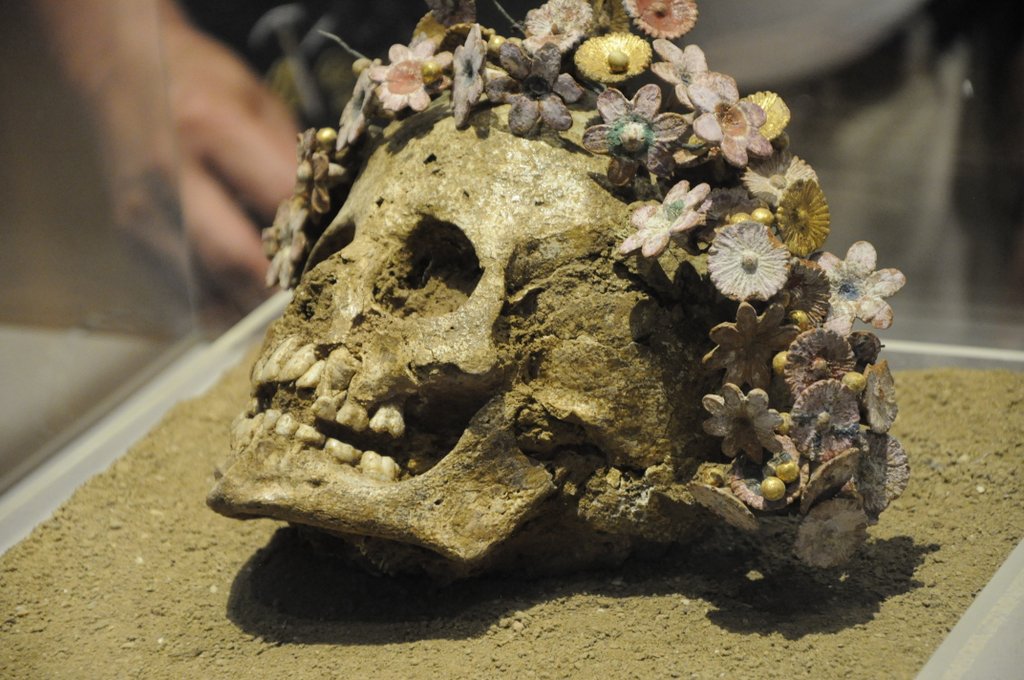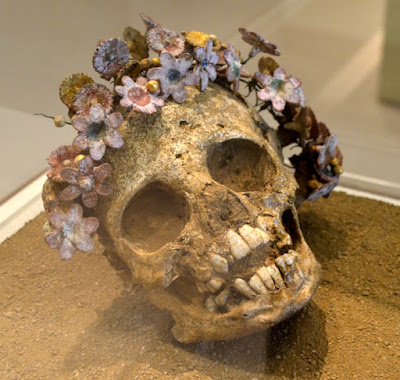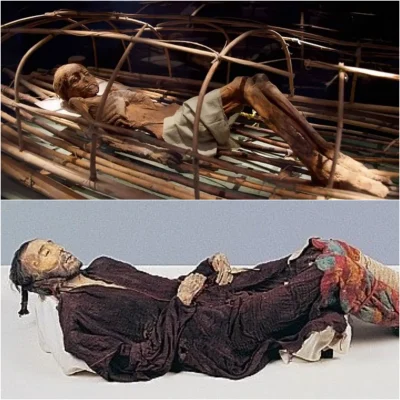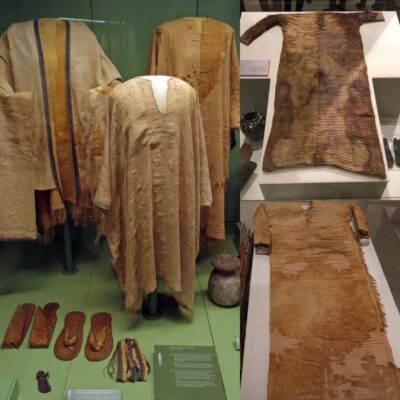Ancient Greek Girl Buried With A Crown of Ceramic Flowers, Patras, 300-400 BC, from Museum of Patras, September 5, 2013//Credit: Wikimedia Commons-Fred Martin Kaaby-CC-BY-SA-3.0
The skull of an Ancient Greek girl with a ceramic flower wreath has been discovered. These remains have been dated circa 400 to 300 B.C. This skull currently resides in The New Archaeological Museum of Patras in Greece.
This fossilized cranium is among a featured collection of the pates of women and girls found in the North Cemetery in Patras in the Hellenistic period. Patras is presently Greece’s third-largest city, the regional capital of Western Greece in the northern Peloponnese.
This period of history under consideration is one of Greek expansion and conquest. The collection is dated roughly from the time of the death of Alexander the Great (323 BCE) to the rise of Augustus in Rome (31 BCE).

Why buried with the wreath of ceramic flowers?
Focusing on the remains of this girl, who obviously did not live to become an adult, allows us to speculate on biological evolution, the meanings of Greek youth in her epoch, and the path girls take in going from childhood to womanhood.
We can consider marriage rituals, religion, gender roles, sexuality, and children’s rites of passage. How did her community value nature and the arts? These are only beginnings. And these instincts become more specific as a product of the historical research one does before digging for bones or the remnants of art or tools.

How to evaluate child brides?
Child brides were a feature of Greek antiquity in the era under consideration, which might indicate that young girl with the wreath was one as well.
Ancient child brides cannot only be meditated on from a modern human rights lens. First of all, such frameworks are not always sensitive to peripheral cultures in the world. Still, empathy is valid.
A girl in her middle or teenage years that has gone through puberty is not the same biologically as a preteen, and, if modern science suggests the brain doesn’t mature biologically until the mid to late twenties, then a preteen bride or even a late teen bride would be at a disadvantage with an older husband in terms of social equality.
The Ancient and modern problem of social equality
The story of this ancient Greek girl can have thrust upon it patriarchy, sexuality, childbearing, and the meanings of marriage. Is marriage about love? If middle-aged men and women have a difficult time successfully navigating relationships today, what does maturity really mean?
In societies distinguished by artisans and peasant farmers, we might think of social responsibility and the age of awareness differently. Further, in ancient and modern times, the families of young girls, especially when poor, are concerned about their economic future. Most loving families take pride and feel joyful when their children get ready to start their own families.
Often, this means children will eventually have children of their own. New grandparents tend to be euphoric. They all of a sudden look at their gray hairs contemptuously. Still, in ancient times, there were very few nuclear families. This child was part of an extended community, and a village had probably raised her.

Perhaps, when she was buried, a crown was placed on her head, lamenting she died before she was married. Maybe the crown suggested a royal status—whether in fact or aspirationally. How humans are buried can say more about those who organize their funerals than the actual personality who is deceased. Clearly, someone cared about this girl, and, if she did die on the day of her marriage, it was a heartbreaking farewell.











